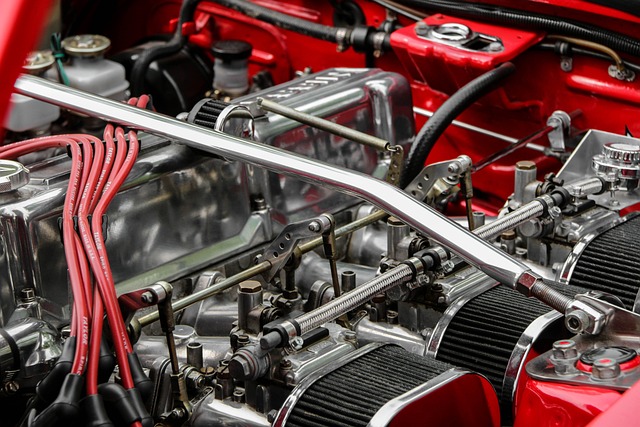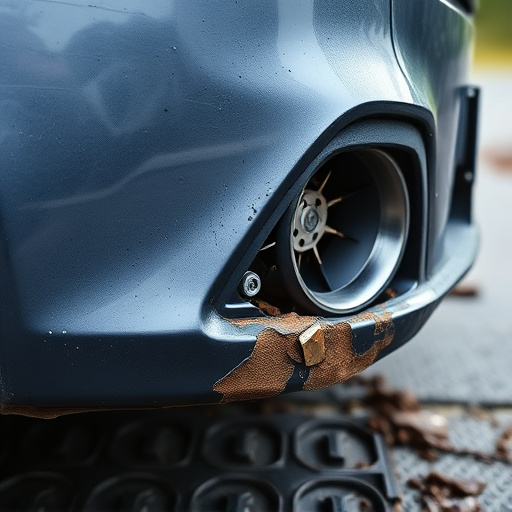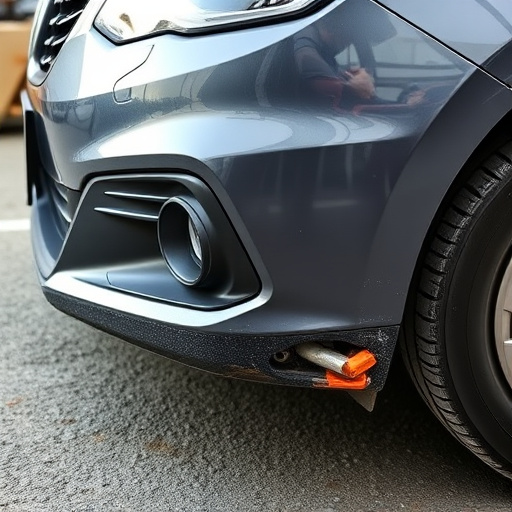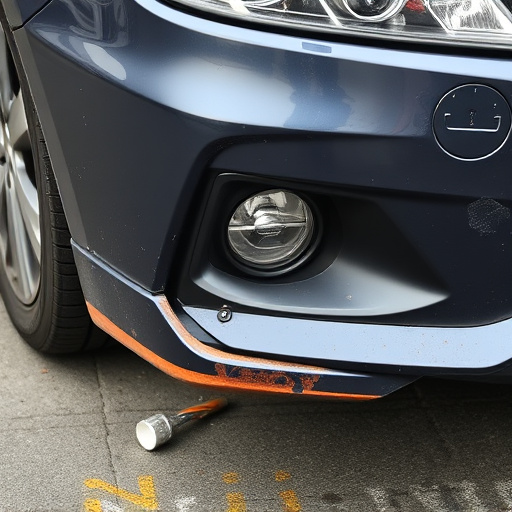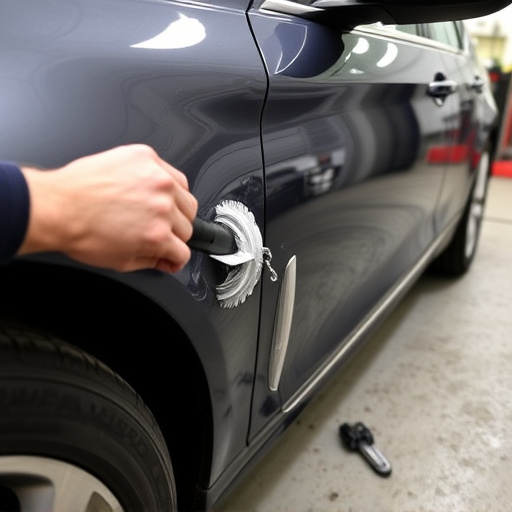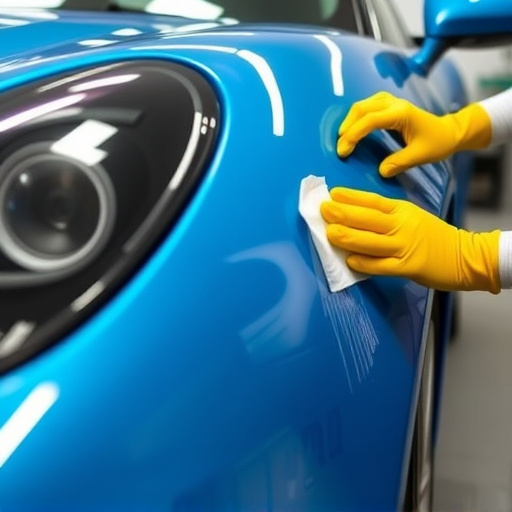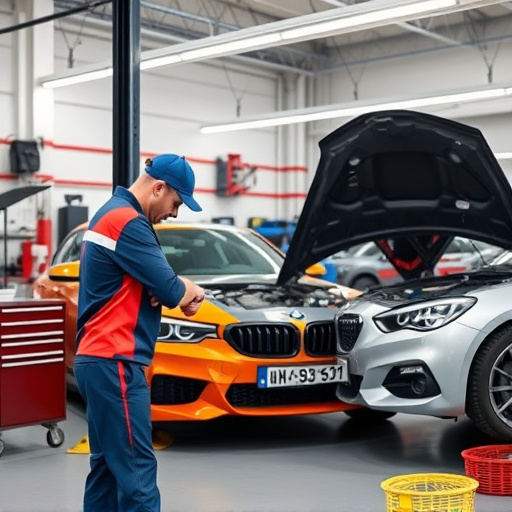Structural adhesive systems are transforming auto body repairs with innovative, precise, and durable solutions. They offer faster repair times, improved structural integrity, and reduced environmental impact compared to traditional methods. These advanced materials enable the revival of vintage vehicles and enhance everyday repairs, setting new standards for both professionals and DIY enthusiasts. Future developments include smart adhesives for self-repairing capabilities and extended component lifespans.
Auto body repairs are undergoing a quiet revolution, driven by the integration of structural adhesive systems. These advanced bonding solutions offer unparalleled strength and precision, transforming the way damages are mitigated. This article explores how adhesives are revolutionizing auto body repair, delving into their key components, benefits, and future trends. By understanding these innovations, we uncover a new era of efficient, durable, and eco-friendly vehicle restoration.
- Revolutionizing Auto Body Repair: The Rise of Adhesives
- Structural Adhesives: Key Components and Benefits
- Future of Auto Repair: Trends and Innovations Driven by Adhesives
Revolutionizing Auto Body Repair: The Rise of Adhesives
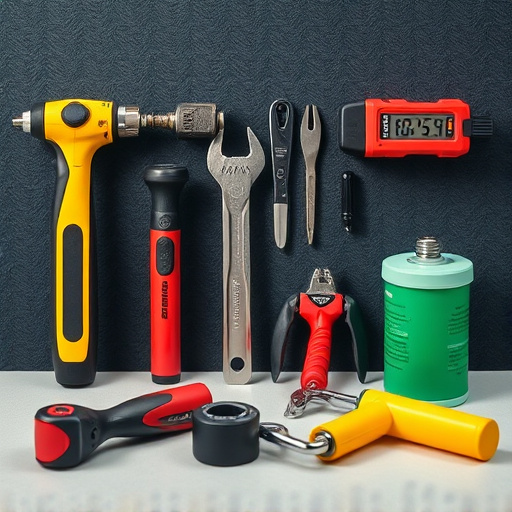
In today’s automotive landscape, structural adhesive systems are revolutionizing the way we approach auto body repairs. These advanced materials offer a significant departure from traditional methods, enabling more precise and efficient restoration processes. By seamlessly bonding metal, plastic, and composite materials together, adhesives provide unparalleled strength and durability, bridging gaps left by accidental damages such as car dents or fender benders. This shift towards adhesive-based repairs is particularly evident in the classic car restoration scene, where meticulous craftsmanship meets modern technology to revive vintage vehicles with minimal alterations.
The adoption of structural adhesive systems isn’t just a game-changer for restoring historical cars like Mercedes-Benz models; it’s also transforming everyday repair processes. Adhesives excel in sealing leaks, enhancing crash safety, and reducing overall repair times. Moreover, their versatility allows for the restoration of intricate automotive details, ensuring that vehicles not only look as good as new but also maintain superior structural integrity. This evolution in auto body repair techniques promises a future where efficiency, durability, and precision converge, setting new standards for both professional mechanics and DIY enthusiasts alike.
Structural Adhesives: Key Components and Benefits
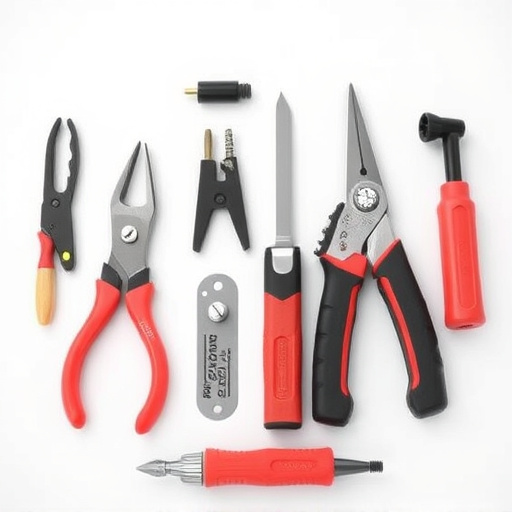
Structural adhesives are transforming auto body repairs by offering a powerful alternative to traditional welding and riveting methods. These advanced adhesive systems consist of key components like resins, hardeners, and solvents that work together to create a strong bond between various car parts. By strategically applying these adhesives, auto repair services can effectively fix and reinforce damaged panels, frames, and structures without the need for invasive procedures.
One of the significant benefits of structural adhesives is their versatility. They can be used for intricate repairs, from dent removal and minor crash damage to more complex restoration work. Unlike car paint repair methods that may require extensive sanding and repainting, adhesives provide a precise and efficient way to mend the underlying structure. This not only streamlines the auto repair process but also ensures better longevity and structural integrity of the vehicle, contributing to safer driving conditions.
Future of Auto Repair: Trends and Innovations Driven by Adhesives

The future of auto repair is being reshaped by innovations driven by structural adhesive systems. These advanced bonding solutions are transforming traditional methods in automotive body work, making processes like fender repair faster, more precise, and environmentally friendly. By enhancing the strength and durability of bonds, structural adhesives enable lighter and more flexible car bodywork designs, contributing to improved fuel efficiency and reduced carbon footprints.
Moving forward, the industry can expect even greater integration of these adhesive technologies. New developments are focused on creating smart adhesives that can self-repair minor damages, extend component lifespans, and improve overall vehicle performance. As the demand for efficient, cost-effective, and sustainable repair solutions continues to grow, structural adhesive systems will remain at the forefront of shaping the future of auto repairs and automotive body work.
Structural adhesive systems are transforming auto body repairs, offering faster, stronger, and more efficient solutions compared to traditional methods. These advanced systems not only enhance vehicle durability but also contribute to lighter weight and reduced environmental impact. As technology continues to evolve, we can expect further innovations in structural adhesives, shaping the future of auto repair with enhanced performance and sustainability at its core.
